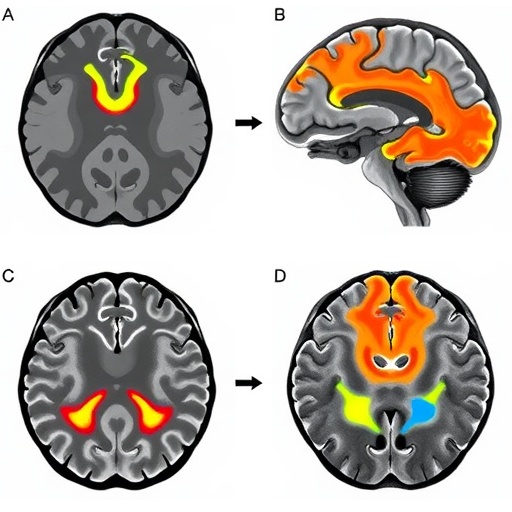In a pioneering endeavor set to revolutionize indoor environmental health within healthcare facilities, the Mayo Clinic in Rochester, Minnesota, has been entrusted with leading a transformative research initiative by the Advanced Research Project Agency for Health (ARPA-H). This high-stakes project, embedded within ARPA-H’s ambitious BREATHE program, signals a formidable leap towards the real-time monitoring and enhancement of indoor air quality in hospitals, with the ultimate goal of safeguarding public health in medical environments across the nation.
The initiative, officially titled Hospital Air QUality (HAIQU): Breathing Life into Patient Care, is centered on addressing a critical yet often underappreciated factor influencing patient outcomes and healthcare worker safety: the quality of the air inside hospital spaces. Airborne contaminants including viruses, bacteria, mold spores, and allergens pose significant risks in densely occupied environments such as emergency departments. Improved air quality not only mitigates the spread of infectious diseases but also underpins fundamental respiratory health, an insight that the Mayo team is leveraging to propel this project forward.
Dr. Connie Chang, Ph.D., an associate professor of biomedical engineering at the Mayo Clinic, leads this project as principal investigator and highlights the pressing need for advancing indoor air quality management technologies. She emphasizes that current systems are largely reactive and lack the capacity for dynamic, continuous surveillance. The project aims to pioneer innovative biosensor technology coupled with sophisticated artificial intelligence algorithms, enabling meticulous air quality assessment and prompt intervention, thereby reducing health risks proactively in busy clinical settings.
The planned deployment of this integrated system spans multiple Mayo Clinic campuses in Florida, Arizona, and Minnesota, focusing initially on emergency departments where patient turnover and airborne infection risk are notably high. By fusing state-of-the-art biosensors with smart air filtration units, the system can detect aerosolized pathogens and pollutants in real time, analyze environmental data intelligently, and automatically adjust air filtration parameters to neutralize potential threats — all while minimizing operational costs.
This multi-year project will unfold progressively across three phases over five years. The first phase centers on engineering and validating a highly sensitive biosensor capable of detecting minute concentrations of airborne biological particles that serve as indicators of contamination risk. Dr. Jim Wilking, Ph.D., a biomedical engineer at Mayo Clinic, spearheads this technical development, focusing on sensitivity optimization, sensor robustness, and seamless integration with hospital infrastructure.
Following validation, the biosensor system will enter real-world field testing in Mayo’s emergency departments to evaluate performance in complex clinical environments. This phase will also include clinical studies led by Dr. Chung Wi, M.D., who oversees efforts to correlate biosensor readings with patient health outcomes and infection incidence, refining the system’s predictive accuracy and clinical relevance.
Beyond technological innovation, this project aspires to establish new benchmarks for indoor air quality standards and inform future public health policy. By demonstrating the feasibility and efficacy of continuous air monitoring paired with automated environmental controls, the HAIQU initiative seeks to influence regulatory frameworks governing hospital air systems, propelling a shift toward preventive environmental healthcare.
Mayo Clinic’s interdisciplinary team comprises experts from various domains, including biomedical engineering, infectious diseases, emergency medicine, and precision population science. Collaborations span notable institutions such as Siemens Corporation, Metalmark Innovations, Princeton University, University of Minnesota Twin Cities, and The University of Chicago, drawing on a rich confluence of academic and industrial expertise to drive this groundbreaking effort.
This initiative also aligns perfectly with Mayo Clinic’s strategic Bold. Forward. Unbound. program, which prioritizes creating healthcare environments that are clean, adaptable, and intelligently interconnected to optimize healing processes. By integrating novel sensing technologies with clinical workflows, the project encapsulates a forward-thinking philosophy aimed at transforming patient care environments into resilient, responsive spaces.
Dr. Vijay Shah, M.D., Kinney Executive Dean of Research at Mayo Clinic, underscores that this research epitomizes the institution’s commitment to leveraging technological innovation and data analytics to move healthcare from reactive treatment toward preemptive illness prevention. The hospital of the future, in this vision, is equipped with advanced sensing infrastructure capable of dynamically detecting and responding to threats as they emerge.
Technically, the biosensor technology at the core of HAIQU employs cutting-edge nanoscale materials and bio-recognition elements that respond selectively to targeted airborne agents. These biochemical interactions generate electrical or optical signals processed by embedded AI models, which analyze patterns to distinguish between benign and harmful particulates, ensuring precise and timely interventions.
Smart filtration systems are engineered to respond to the biosensor data by modulating airflow, activating UV sterilization methods, or deploying particulate filters as needed. These adaptive controls minimize energy consumption while maintaining optimal air purity, showcasing a balanced approach to environmental sustainability and patient safety.
The ultimate potential of this research extends beyond immediate clinical implications; it may set the stage for comprehensive indoor air quality monitoring frameworks applicable to myriad public buildings, catalyzing an era in which environmental health is continuously safeguarded by intelligent infrastructure.
Through sustained interdisciplinary effort and a commitment to innovation, the Mayo Clinic-led HAIQU project heralds a new frontier in healthcare safety and environmental control, promising tangible benefits for patients, healthcare workers, and society alike.
Subject of Research: Development of real-time biosensor and AI-integrated smart filtration systems for monitoring and improving indoor air quality in emergency departments to enhance health outcomes and prevent airborne disease transmission.
Article Title: Mayo Clinic Leads ARPA-H Funded Project to Revolutionize Hospital Air Quality with AI-Driven Biosensors
News Publication Date: Not explicitly provided
Web References:
– Mayo Clinic: https://www.mayoclinic.org/
– ARPA-H: https://arpa-h.gov/
– BREATHE Program Announcement: https://arpa-h.gov/news-and-events/arpa-h-launches-breathe-monitor-and-improve-indoor-air-quality
– Bold. Forward. Unbound. Program: https://www.mayoclinic.org/giving-to-mayo-clinic/our-priorities/bold-forward-unbound
Keywords: Indoor air quality, biosensors, artificial intelligence, smart filtration systems, hospital air monitoring, ARPA-H, Mayo Clinic, healthcare safety, real-time monitoring, airborne pathogens, emergency department, public health innovation
Tags: airborne contaminants in medical facilitiesARPA-H funding for healthcareBREATHE program for healthDr. Connie Chang biomedical engineeringhealthcare environmental safetyHospital Air Quality initiativeimpact of air quality on patient outcomesindoor air quality improvementMayo Clinic air quality researchreal-time air monitoring in hospitalsrespiratory health in hospitalstransformative healthcare research projects





